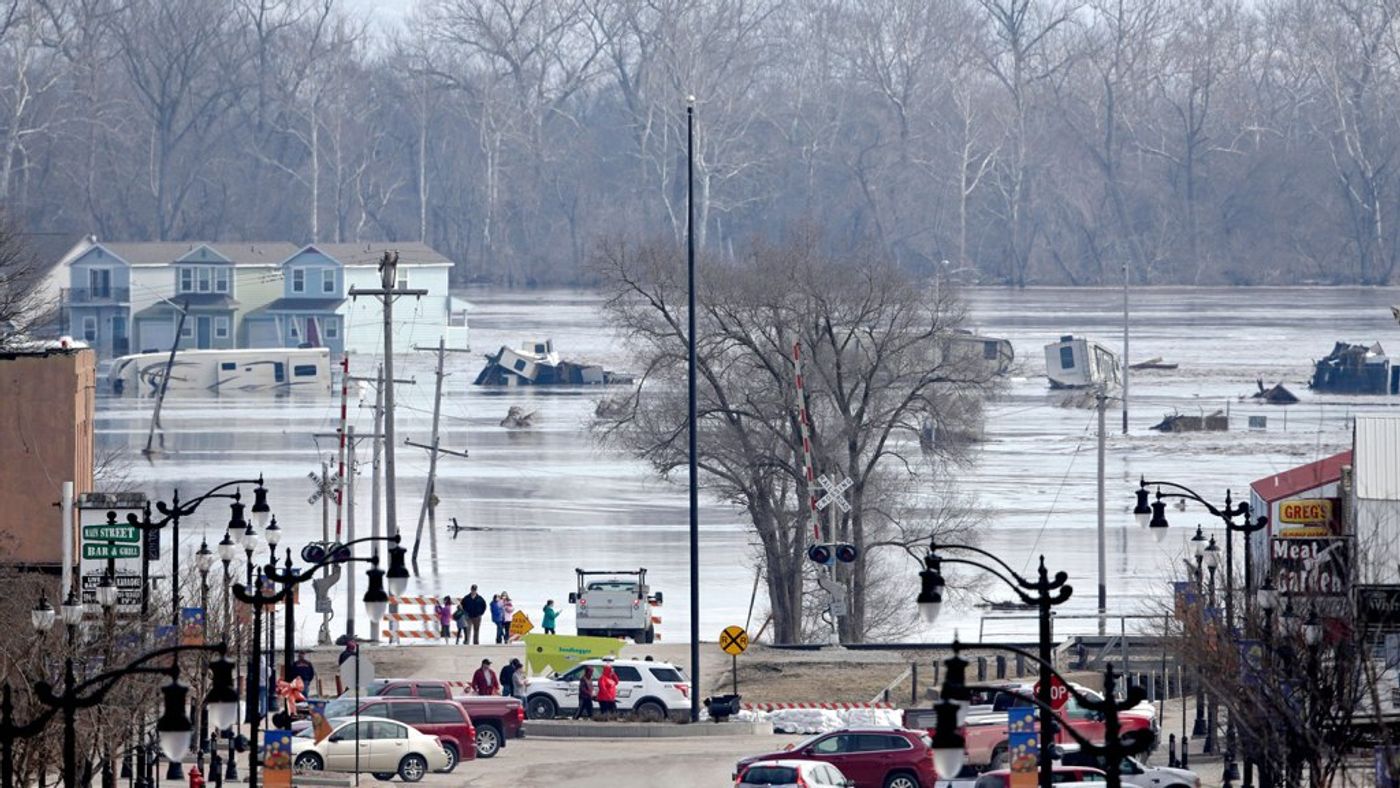The culprit behind the Midwest's flooding disaster
Flooding in the Midwest has reached dangerous levels, with the death toll currently at three people and another two missing. Residents in Nebraska, Iowa, Ohio, Wisconsin, and South Dakota have been forced to evacuate their homes as floodwaters have risen quickly and show little sign of receding. The governors of Nebraska, South Dakota, and Wisconsin have declared emergencies, and Iowa’s governor has issued a disaster proclamation.
The flooding was triggered by a particularly snowy winter and an onset of rain in the last week. According to the Weather Service’s Omaha office, 1.37 inches of rain were recorded last week though more fell to the north and west. Already over the average amount of rain that the region receives, the location of the precipitation could not have been worse: the rain fell on top of snow and the earth could not absorb more moisture.
“A lot of it stems from the fall flooding in September and October,” said Mindy Beerends, a senior meteorologist at the Des Moines office of the National Weather Service. “The soil was [already] saturated in the fall. On Wednesday and Thursday, warm air moved in, and we got rain, and the snow melted. The higher-than-average precipitation, combined with warm temperatures, snowmelt and the frozen ground, was a perfect storm for flooding,” Ms. Beerends explained. “The ingredients were in place.”
The flat landscape of the Midwest made it easy for overflowing rivers to spread quickly over farms, houses, and businesses. The situation was exacerbated by the breaching of levees in surrounding areas.
Though the damage is still being evaluated, as of Sunday, the Sarpy County Nebraska Sheriff's office said that at least 500 homes were ruined by floodwaters. This number is likely a low estimate. In addition to hundreds of families who fled from their homes, the Offutt Air Force Base and National Weather Service office, both in Omaha, were also forced to evacuate.
Kevin Low, a hydrologist at the Missouri Basin River Forecast Center, commented that some places across the Midwest received the equivalent of six inches of water in 24 hours. “This would not have been historic if we had not had the two inches of rain on top of that,” he said. “We would have had some minor-to-moderate flooding. Instead, we have 30 locations that hit records in central and eastern Nebraska, and northwest Iowa, including two locations on the Missouri River itself.”
Under climate change models, our future climate will be capable of holding more and more moisture in the atmosphere, thus producing the conditions for more storms and flooding like this in years to come.
Sources: Weather.com, Accuweather, The New York Times









